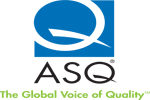One tech feature, in particular, that can give automakers headaches is hands-free communication systems. Indeed, in the recently releasedJ.D. Power and Associates 2011 Initial Quality Study(IQS), which measures new-vehicle quality after 90 days of ownership, is the second-most-frequently reported problem. Excessive wind noise is first and has been for many years).
To illustrate how significant the issue has become, in 2006 “Hands-free communication does not recognize command” did not even appear among the top 20 industry problems in the IQS study. During the past five years, the number of owner-reported problems with hands-free communication systems has increased by nearly 240% (to 6.1 problems per 100 vehicles in 2011 from 1.8 PP100 in 2007). This increase in problems mirrors the increase in the number of models equipped with a hands-free communication system, to 31% in 2011 from 10% in 2007.
The issue is gaining more attention in the industry, as an increasing number of models are equipped with hands-free technology. Unlike features such as tire-pressure-monitoring systems, however, hands-free communication isn’t federally mandated. Manufacturers have been adding the feature to improve driver safety and lessen the possibility of driver distraction as well as in response to laws in some states barring the use of handheld devices while driving. As of June 2011, eight states and the District of Columbia have banned the use of handheld cell phones while driving.
According to the2011 Initial Quality Study, overall new-vehicle quality in 2011 is higher than it has been in the past six years. In 2011, the initial quality of new vehicles averages 107 PP100, a slight improvement from 2010. During the past six years, the industry has improved at an average rate of 3% per year.
Other highlights of the 2011 IQS include:


